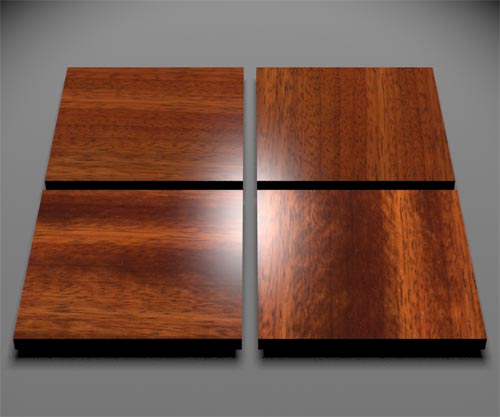
Rendered Image of Wood: Existing model (top) and new model
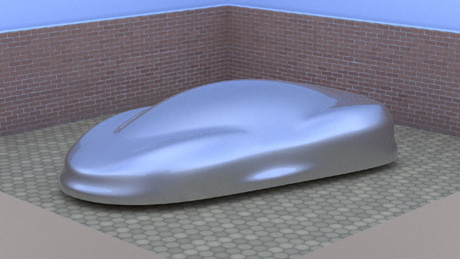
Rendered Image
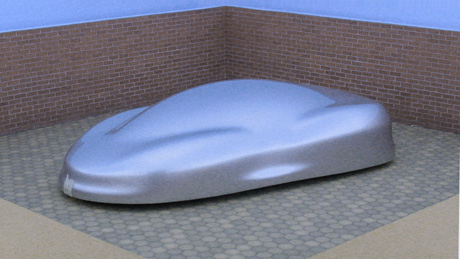
Photograph

Quantitative Gloss Scaling

Quantitative Gloss Scaling
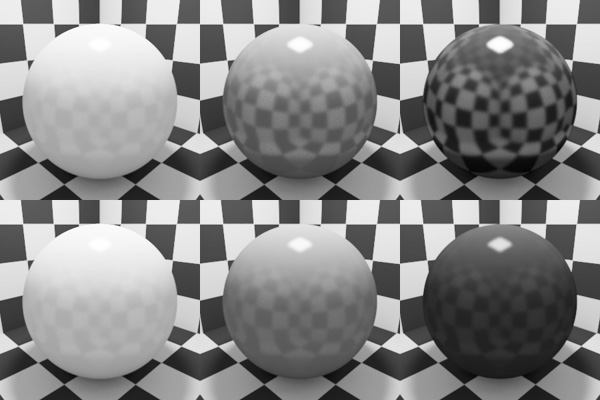
Perceptual vs. Physical Gloss Matching
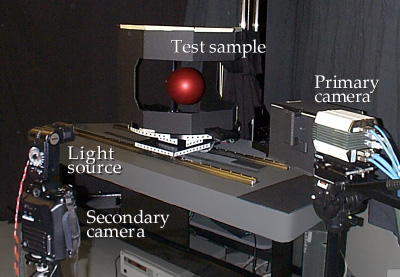
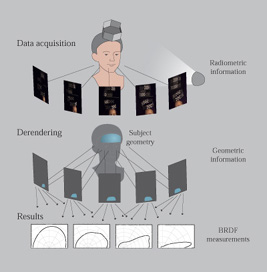
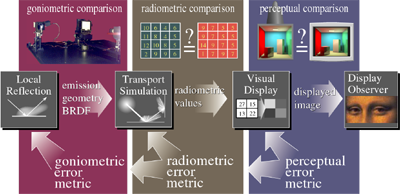
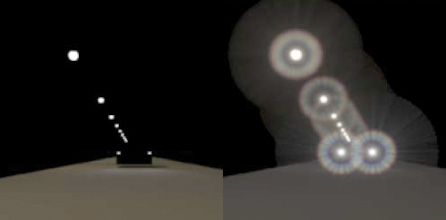
Night Driving Scene Without and With Simulated Glare

| Motivation | The Consortium | Research Areas | Core Personnel | Program of Computer Graphics | Membership | Projects | Contact Information |
The Consortium has suspended operations indefinitely due to lack of funding. Stephen Westin is leaving the Cornell Program of Computer Graphics; his last day of work will be August 18, 2005.
The paper “Measuring and Modeling the Appearance of Finished Wood”, to be presented at SIGGRAPH 2005 in August, is now available in the Projects section. Both printable PDF files and animations are available for download.
The goal of design visualization is prediction: to show the design exactly as it will appear when built. Existing CAD visualization tools have proven their value, but have also shown some important limitations. Sometimes the visualizations produce “surprises", where the final physical object looks different than it did in the computer rendering.
Many commercially available modeling and rendering tools have been developed for the entertainment industry, where artistic skill is applied to convince viewers that the image on the screen is real. These tools typically simplify the image rendering process by using ad hoc models of local light reflection and ignoring global illumination effects within the environment.
Automotive design and development presents many challenges of a visual nature, ranging from complex 3-dimensional aesthetic design to visibility and glare issues. Unfortunately, until now there has been no concerted, coordinated research effort to solve these problems.
Commercial research is quite reasonably driven by the market, where product design is a tiny market compared to game development, motion picture production, or office automation. Most importantly, many of the issues span multiple disciplines. Computer hardware manufacturers may not be equipped to deal with questions of physical modeling of light transport, and software vendors may not be prepared for fundamental research into human perception.
Our consortium provides leverage to work on topics of shared interest, combining resources that separately would fall short of funding a significant research effort. Results may be directly applicable in the studios and shops of the participants, or they may be implemented by software and hardware vendors.
Possible research areas or projects include:
The research plan for each year will be decided in consultation with the members of the consortium.
The core personnel in the Consortium are James A. Ferwerda and Stephen H. Westin.
James Ferwerda holds a Ph. D. in experimental psychology from Cornell, as well as a Master’s Degree from the Program of Computer Graphics. He is a Research Associate in the Program of Computer Graphics at Cornell University where he leads research projects in computer graphics, visualization, digital imaging, and human-computer interaction. His current focus is on building computational models of human vision from psychophysical experiments, and developing advanced graphics algorithms based on these models. Recent projects include: digital imaging techniques for the simulation and enhancement of low vision, a model of visual adaptation for realistic digital imaging, a model of visual masking for perceptually-based rendering; and studies of: the psychophysics of surface appearance; the effects of rendering onshape perception in automobile design; and the usability of three-dimensional graphical interfaces (for which he received the IEEE Computer Society Paper of the Year Award).
He is an associate editor of ACM Transactions on Applied Perception and Computer Graphics Year in Review, has served as a consultant to Hewlett-Packard Laboratories and General Motors Research, and serves on the NIST Advisory Group on the Metrology and Modeling of Color and Appearance, the CIE Technical Committee TC8-08 on High Dynamic Range Imaging, and the Advisory Board for the IMLS Digital Library of Printable Machines.
Stephen Westin is a veteran of over a decade in automotive CAD/CAE at Ford studios in Dearborn and Germany. He holds a Master’s Degree from the Program of Computer Graphics, and has published papers on simulation, modeling, and acquisition of surface reflectance and appearances. He has served as a SIGGRAPH papers reviewer since 1993, was a reviewer for the book “Advanced RenderMan” by Tony Apodaca and Larry Gritz, and has reviewed papers for journals including ACM Transactions on Graphics, IEEE Transactions on Visualization and Computer Graphics, and various conferences. He served on the program committee of Cornell’s 1999 Workshop on Rendering, Perception, and Measurement.
The research team will be supplemented by graduate students as funding permits, and will have the facilities and staff of the Cornell Program of Computer Graphics to draw on, including
Professor Donald Greenberg founded the Program of Computer Graphics in 1973 with the vision of a perfect visualization tool for design evaluation, and the Program pursues that vision as its core goal to the present day. The Program is part of the Cornell College of Architecture, Art, and Planning, and has made major contributions to design visualization in that field, including the innovation of radiosity.
To our knowledge, we are the only laboratory actively pursuing research in all three areas of physically-based rendering: reflectance modeling, global illumination, and human visual perception. Our publication record is among the strongest in the field, and we have led workshops at the SIGGRAPH conference and at Cornell in the areas of measurement, rendering, and perception for more than two decades.
We have financial and in-kind support from the National Science Foundation, Intel Corporation, Autodesk/Discreet, and Alias|Wavefront.
We have built world-class facilities for computer graphics research. Our Light Measurement Lab is unique in the field of computer graphics, allowing us to measure reflectance of flat and curved samples, spectral distributions of light sources, and spectral radiance of entire scenes. Sample data are available on the Web. We also have a calibrated array of 6MP digital cameras, a wide-field large-screen display system (3 screens, ~25ft width, resolution >3000 pixels) and a computing cluster of 128 Intel processors for large computations.
We also draw on the resources of Cornell University as needed to aid in our research efforts. Most relevant to the Consortium is the availability of an operational CAVE immersive system at the Cornell Theory Center, housed in the same building as the PCG.
Our alumni include faculty members at Yale, Stanford, and UC Berkeley, as well as executives at Pixar and Sony Pictures Imageworks.
Other alumni are active in technical roles at PDI/Dreamworks, nVidia, Bentley Microsystems, Autodesk, NASA, and Bose Audio. Awards to faculty and alumni include
The annual membership fee will entitle each corporate member to:
The Program of Computer Graphics has accomplished a body of work that is applicable to the problems of automotive design, including
The following publications demonstrate research already under way that will be enhanced and accelerated by the Consortium.
 Rendered Image of Wood: Existing model (top) and new model |
Measuring and Modeling the Appearance of Finished Wood, to be presented at the SIGGRAPH 2005 conference. | |
 Rendered Image  Photograph |
Effects of Rendering on Shape Perception in Automobile Design, presented at the APGV 2004 conference. | |
 Quantitative Gloss Scaling |
A psychophysically-based model of surface gloss perception, presented at the SPIE Human Vision and Electronic Imaging Conference ’01. | |
 Quantitative Gloss Scaling |
A psychophysically-based model of surface gloss perception, presented at the SPIE Human Vision and Electronic Imaging Conference ’01. | |
 Perceptual vs. Physical Gloss Matching |
Toward a psychophysically-based light reflection model for image synthesis, presented at the SIGGRAPH 2000 Conference. | |

|
Image-based bidirectional reflectance distribution function measurement, published in Applied Optics-OT, 39(16):2592--2600, June 2000. | |

|
Image-based brdf measurement including human skin, Presented at the 1999 Eurographics Workshop on Rendering. | |

|
A framework for realistic image synthesis, Presented at the SIGGRAPH 97 conference. | |
 Night Driving Scene Without and With Simulated Glare |
Physically-based glare effects for digital images, presented at the SIGGRAPH 95 Conference. |
A more complete bibliography of publications by members of the Program of Computer Graphics is available on line.
For more information on the Consortium, contact either Stephen H. Westin or James A. Ferwerda